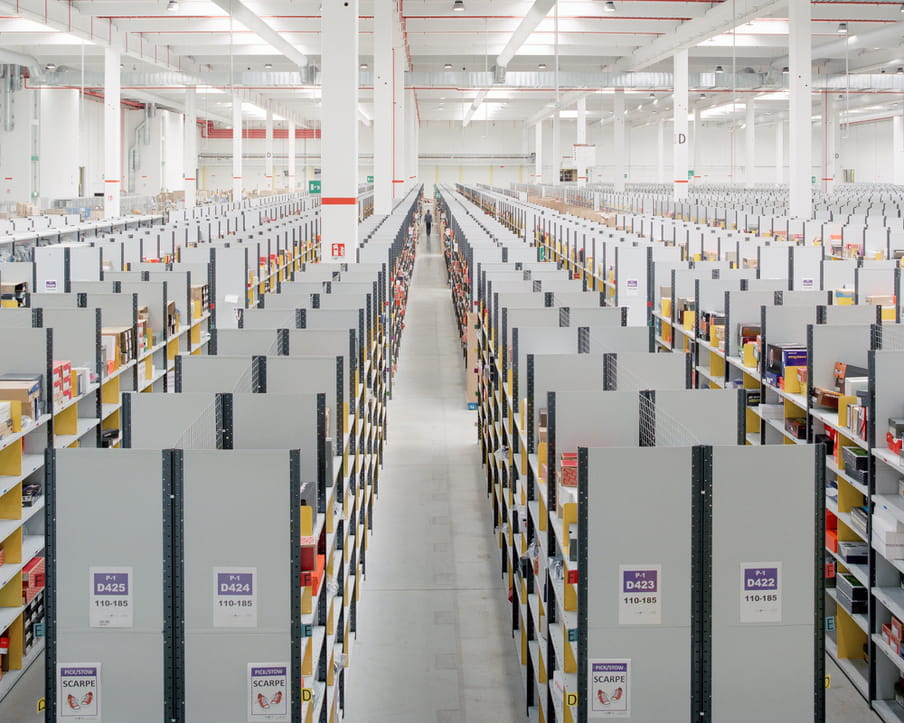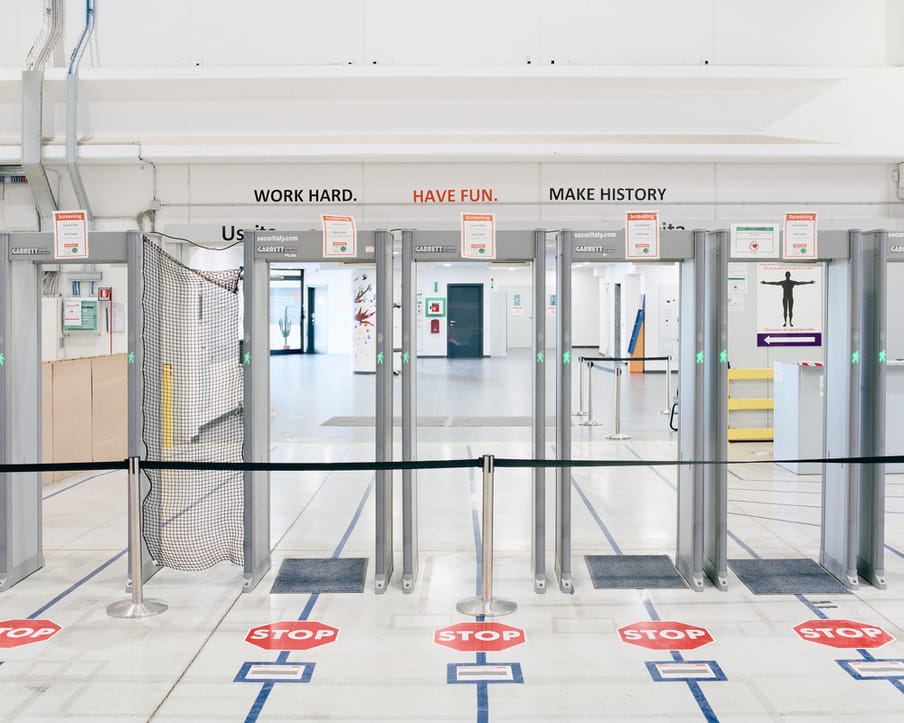

Something big is about to happen on the climate scene. It’s been stirring just beneath the headlines for a couple of years, and over the coming decade, it’s likely to change the conversation in powerful new ways.
In the final months of 2018, the Intergovernmental Panel on Climate Change (IPCC) grabbed the world’s attention with a new report, which stated that to avert climate breakdown, we need to cut global emissions in half by 2030 and reach zero by 2050.

It would be difficult to overstate how dramatic this trajectory is. We need to accomplish nothing less than the rapid reversal of our present direction as a civilisation. Think about it: we’ve built up a global fossil fuel infrastructure over the past 250 years, and now we have to completely overhaul it in only 30. Everything has to change in a matter of decades.
Read this story in one minute.
And keep in mind that this is for the world as a whole. The transition has to happen much faster in high-income nations, given that they are responsible for the overwhelming majority of historical emissions. Scientists at the Stockholm Environment Institute estimate that countries in North America and Europe, for instance, need to reach net zero before 2030.
The IPCC report had a galvanising effect on citizen action. The month after it was published, Extinction Rebellion blockaded five bridges in central London, demanding quick action and pressing the government to declare a climate emergency. In the United States, Alexandria Ocasio-Cortez put forward a plan for rapid emissions reductions under the banner of the Green New Deal, which inspired a raft of similar efforts across Europe.
Suddenly we find ourselves in completely new terrain. The old fantasy that market mechanisms will somehow magically solve the climate crisis has been thoroughly dashed, and a new consensus is emerging: we need coordinated government action on a massive scale.



Moving from economic growth to wellbeing
It’s an inspiring vision and a big improvement over the earlier discourse. But there’s a problem. Climate scientists are warning that it’s not feasible for high-income nations to transition to renewables fast enough to stay within the carbon budget for 1.5C, or even 2C, if they continue to pursue economic growth at the usual rates. Why? Because more growth means more energy demand, and more demand makes it all the more difficult to roll out enough renewable energy capacity. According to a team of scientists based in Canada, if we carry on with growth as usual, the required rate of decarbonisation is "well outside what is currently deemed achievable".
In fact, this is precisely why we’ve failed to make any progress on climate breakdown so far. Over the past 20 years, the world has rolled out 8bn megawatt hours of new clean energy capacity. That’s a lot. But over the same period, energy demand has grown by six times that amount. All that new clean energy has been completely swamped by new demand, and so emissions keep rising year after year.
Our dogged insistence on economic growth is making this vital task much more difficult than it needs to be. It’s like choosing to fight a life-or-death battle while going uphill, blindfolded, with both hands tied behind your back. We are voluntarily sabotaging our chances at success.
The evidence is mounting: if we want a decent shot at climate stability, high-income nations will have to shift to post-growth economic principles
The evidence is mounting: if we want a decent shot at climate stability, high-income nations will have to shift to post-growth economic principles. This would have been unthinkable in mainstream circles only a few years ago, but there’s now a striking consensus forming. In 2018, 238 scientists called on the European commission to abandon growth as an objective and explore post-growth futures. In 2019, more than 11,000 scientists from over 150 countries published an article stating that "We need to shift from pursuing GDP growth and affluence toward sustaining ecosystems and improving well-being." Some of the world’s leading scholars have said the same thing, including Bill Gates’s favourite intellectual, Vaclav Smil.
Post-growth thinking is starting to trickle into policy, too. Jacinda Ardern, the prime minister of New Zealand, captured headlines in 2019 with her promise to abandon GDP growth as an objective in favour of wellbeing. The leaders of Scotland and Iceland have indicated that they will follow suit. With each announcement, social media erupted with excitement. People are ready for something different.
Justice is the antidote to growth
And here’s the best part: the move away from growth is not as wild as it might seem. Economists have long assumed that we need growth to improve people’s lives. But it turns out there’s no empirical evidence for this argument. Beyond a certain point, which high-income countries have long since surpassed, the relationship between GDP and human wellbeing completely breaks down.

Take life expectancy, for example. The United States has a GDP per capita of $60,000 – making it one of the richest countries in the world. US Americans can expect to live 78.5 years. But dozens of countries beat the US in life expectancy with only a fraction of the income. South Korea has 50% less GDP per capita and a life expectancy of 82.6 years. Portugal has 65% less GDP per capita and a life expectancy of 81.1 years.
We can see the same pattern playing out when it comes to education. Finland has one of the best education systems in the world, despite having a GDP per capita that’s 23% less than the United States. Estonia ranks highly too, with 66% less GDP per capita. Poland outperforms the United States with 77% less.
What explains these astonishing results? It’s simple: they’ve all invested in high-quality universal healthcare and education. When it comes to delivering long, healthy, flourishing lives for everyone, this is what counts. And the good news is that it is not at all expensive to do. In fact, universal public services are significantly more cost-efficient than their private counterparts. Spain spends $2,300 per person on healthcare, which is enough to secure one of the highest life expectancies in the world (83.3 years). The United States spends four times more to get worse results.
Beyond a certain point, the relationship between GDP and human wellbeing completely breaks down
The reason that GDP growth tends not to deliver the outcomes that we might expect is because the vast majority of it goes straight into the pockets of the rich. They are the real beneficiaries of growth. In the United States, the incomes of the richest 1% have more than tripled since the 1970s, soaring to an average of $1.4mn. Meanwhile, for ordinary people, real wages are lower today than they were in the 1970s, and poverty rates are higher.
With data like this, it becomes clear that growthism is little more than ideology – an ideology that benefits a few at the expense of our collective future. We’re urged to step on the growth accelerator with deadly consequences for our planet, all so that a rich elite can get even richer.
The truth is we don’t need more growth to improve people’s lives. We can accomplish our social goals right now, without any growth at all, simply by sharing what we already have more fairly, and by investing in generous public goods. It turns out justice is the antidote to the growth imperative – and key to solving the climate crisis.



Intentional inefficiencies
While abandoning GDP growth as a policy objective is a good first step, scientists warn that it’s not enough in and of itself.
The headline scenario in the IPCC’s 2018 report indicates that the only feasible way to stay under 1.5C is for high-income countries to actively scale down energy demand. The less energy we use, the easier it is to accomplish a rapid transition to renewables. This is perhaps the single most important lesson that climate science has taught us in the past few years.
How do we get there? This isn’t just a matter of switching to energy-efficient light bulbs, although of course that helps. The IPCC points out that the most effective way to reduce energy use is not to target households but industry. Think of all the energy that’s needed to extract and produce and transport all of the material commodities that the economy churns out each year. Think of the mining, the logging, the factories, the packaging, the container ships, the warehouses, the retail outlets and the waste disposal facilities. The material economy is a giant energy-sucking machine. By reducing the material "throughput" of our economy – the amount of stuff we produce and consume – we can reduce our energy demand.
We like to think of capitalism as a system that’s rational and efficient when it comes to meeting human needs. But in some respects, it’s exactly the opposite
On the face of it, this might seem unfeasible. But it’s really not. The key thing to grasp is that a huge chunk of material production in our economy is intended, literally, to be wasted. Firms desperate to overcome the limits of saturated markets resort to all sorts of devious tactics to artificially increase turnover.
Take planned obsolescence, for example. The lifespan of household appliances like refrigerators and washing machines has plummeted over the past few decades. Smartphones and laptops become unusable after just a few years, and manufacturers make repairs so difficult and expensive that we have no choice but to replace them. In the textile industry, an explosion of fast fashion is at the point where clothes are now made to "go out of style" within weeks.
Then there’s advertising. Research by US sociologists has revealed that advertising expenditures have a direct impact on rates of material consumption. The higher the spend, the higher the consumption. In 2010, the global advertising spend was about $400bn. In 2019, it was $560bn and rising.
We like to think of capitalism as a system that’s rational and efficient when it comes to meeting human needs. But in some respects, it’s exactly the opposite. In pursuit of constant growth, firms resort to intentional inefficiencies. This might be rational from the perspective of profits, but from the perspective of human need, and from the perspective of ecology, it is a kind of madness. It is madness in terms of human labour, too. Think about the millions of hours that are poured into producing stuff that’s designed to break down, or that people don’t actually need in the first place.
It doesn’t have to be this way. We can legislate for long-term warranties, rights to repair, and mandatory take-back schemes. We can regulate marketing expenditures, and we can liberate public spaces from ads telling us to buy even more – both offline and online. The gains from this could be enormous. Think about it: if clothes and refrigerators and smartphones last twice as long, we will consume half as many. That’s half the extraction, half the shipping, half the warehouses, half the transport, half the waste – and half the energy it takes to power it all.
There are also a number of other steps we can take. We can shift from private cars to public transport. We can ban food waste by supermarkets and farms. We can cut single-use packaging. And we can choose to scale down ecologically destructive and socially less necessary industries, such as SUVs, McMansions, plastics, arms and beef. Rather than assuming that every industry should just keep growing indefinitely, regardless of whether or not we actually need it, we can have a rational conversation about what industries we might want to de-grow instead.
All of this would achieve a dramatic reduction in energy demand, enabling us to achieve our climate goals more easily, and without compromising access to the things we need to live well.
But, you might ask, what about jobs? As we scale down unnecessary industrial activity, won’t that cause unemployment to rise?
Under normal circumstances, yes. But ecological economists have a surprisingly simple solution to this: shorten the working week. Add a job guarantee to the mix (a policy that happens to be resoundingly popular) and we can have three-day weekends for all and full employment at the same time. To make up for lost hours, we can introduce living wages pegged to the week, or roll out a universal basic income. And we can provide retraining programmes to enable workers to move painlessly from dirty industries to cleaner ones.
What’s exciting about this move is that it has a substantial positive impact on wellbeing. Studies in the US have found that people who work shorter hours are happier than those who work longer hours, even when controlling for income. And it has a big impact on energy demand, too. If the United States were to reduce its working hours to the levels of western Europe, its energy use would decline by a staggering 20%.
Public interest in post-growth economics has soared over the past year as the climate crisis worsens. With fires blazing through Australia and the Amazon, floods swamping northern England, droughts driving migration, and record heatwaves searing across Antarctica, people realise that the status quo has us hurtling toward disaster, and they’re increasingly open to new ideas. In the 2020s, we can expect that the climate movement will rally around the Green New Deal and a vision for a completely new economy.

 About the images
Michele Borzoni’s neatly composed images show a world that touches all of our daily lives but is mostly out of sight. In an introduction to his work, the Italian photographer states: "Amazon, Ikea and CEVA Logistics are only but a few of the corporations which have based their logistics centres near Piacenza, a city in the north-east of Italy that is now dubbed the Italian capital of logistics. The Italian logistics sector has experienced the highest growth rate in Europe and is now worth €200bn, 13% of Italy’s GDP. In Piacenza, logistics centres occupy a total 2mn squared metres and employ 6,400 workers." Although Italy has been at the forefront of this development, logistic centres, like the ones depicted here, are spreading like wildfire, not just in Italy but around the world. They see to it that our every need is met. (Isabelle van Hemert, image editor)
About the images
Michele Borzoni’s neatly composed images show a world that touches all of our daily lives but is mostly out of sight. In an introduction to his work, the Italian photographer states: "Amazon, Ikea and CEVA Logistics are only but a few of the corporations which have based their logistics centres near Piacenza, a city in the north-east of Italy that is now dubbed the Italian capital of logistics. The Italian logistics sector has experienced the highest growth rate in Europe and is now worth €200bn, 13% of Italy’s GDP. In Piacenza, logistics centres occupy a total 2mn squared metres and employ 6,400 workers." Although Italy has been at the forefront of this development, logistic centres, like the ones depicted here, are spreading like wildfire, not just in Italy but around the world. They see to it that our every need is met. (Isabelle van Hemert, image editor)
Dig deeper
 The alt-right has taken the political centre. It’s not too late to win it back
A new incarnation of right-wing politics has taken hold of the mainstream. Its ideas and language, funded by billionaires, have been carried by politicians and pundits out of the fringes. Now that we can map this extensive network more fully, we can fight it.
The alt-right has taken the political centre. It’s not too late to win it back
A new incarnation of right-wing politics has taken hold of the mainstream. Its ideas and language, funded by billionaires, have been carried by politicians and pundits out of the fringes. Now that we can map this extensive network more fully, we can fight it.
 We aren’t just stopping coronavirus. We’re building a new world
We must pressure our leaders to take the long view in any coronavirus economic recovery package, even if this feels like a short-term emergency.
We aren’t just stopping coronavirus. We’re building a new world
We must pressure our leaders to take the long view in any coronavirus economic recovery package, even if this feels like a short-term emergency.


